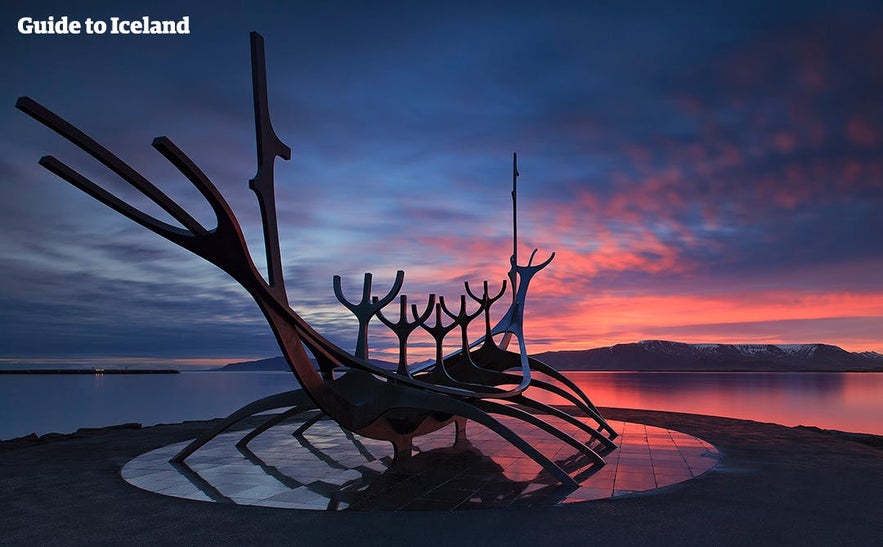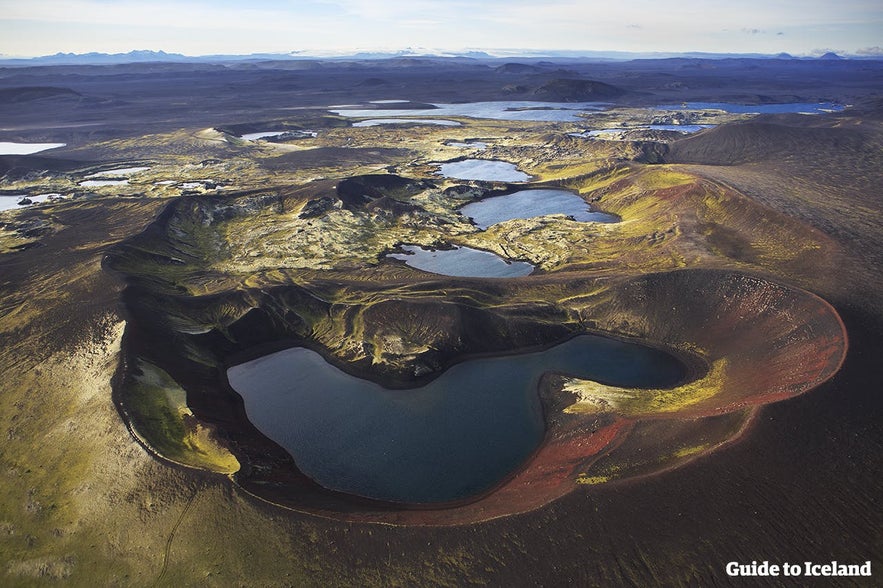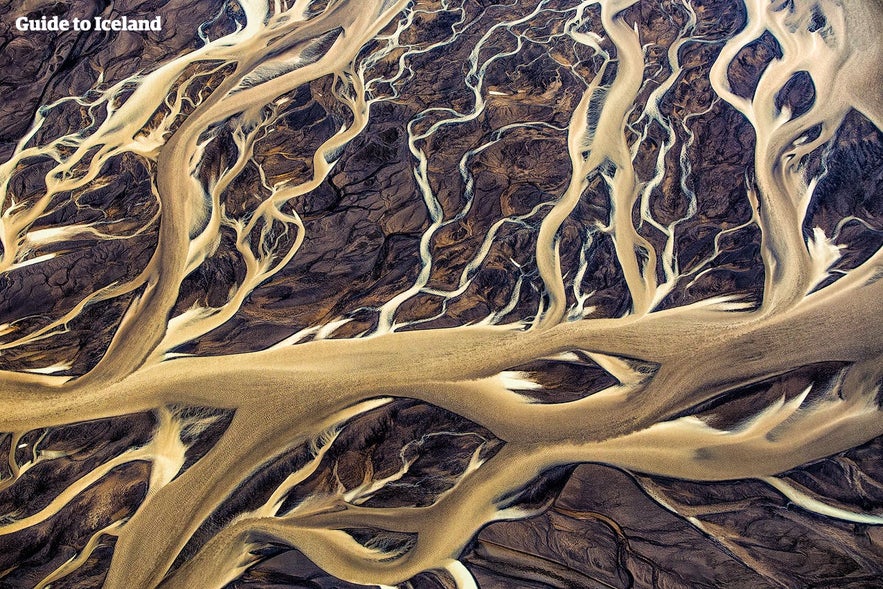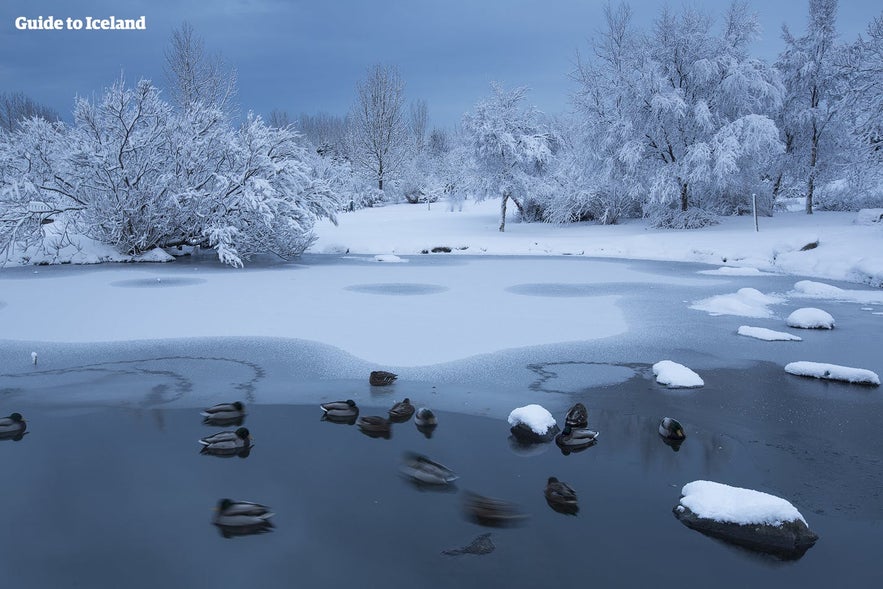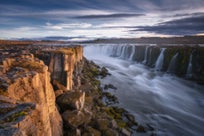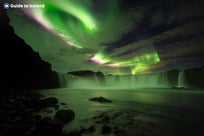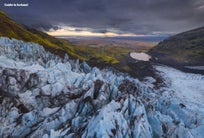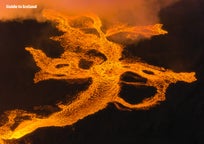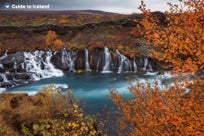
Fishing in Iceland

- History of Fishing in Iceland
- Commercial Fishing in Iceland
- Types of Fish in Iceland
- Saltwater Fish in Iceland
- Freshwater Fish in Iceland
- Recreational Fishing in Iceland
- Fishing Regulations in Iceland
- Fishing Independently in Iceland
- Lake Fishing in Iceland
- River Fishing in Iceland
- Ice Fishing in Iceland
- Sea Angling in Iceland
- Fishing Tours in Iceland
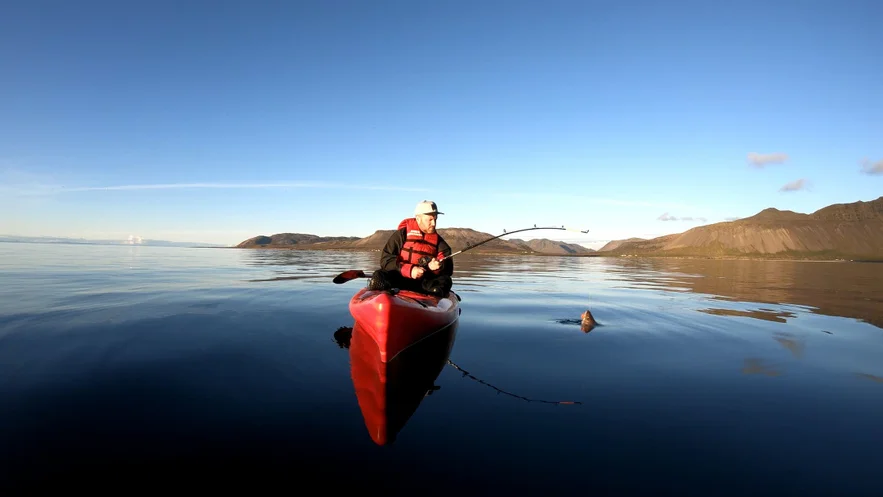
Where can you go fishing in Iceland, and what might you catch? Can you fish independently, and are there fishing tours and holidays you can join? What is the history of fishing in Iceland? Continue reading to learn all about Iceland’s most historic activity.
Photo from Kayak Fishing Adventure by Mount Kirkjufell
With incredible fjords, fertile oceans, and a network of lakes and rivers webbing across the country, it is little wonder why fishing in Iceland is so popular.
Surrounded by beautiful landscapes, in a secluded place of peace, the fishing spots around this little island nation are some of the most serene in the world. They provide the sought-after harmony most anglers need to handle the bustle of day-to-day life.
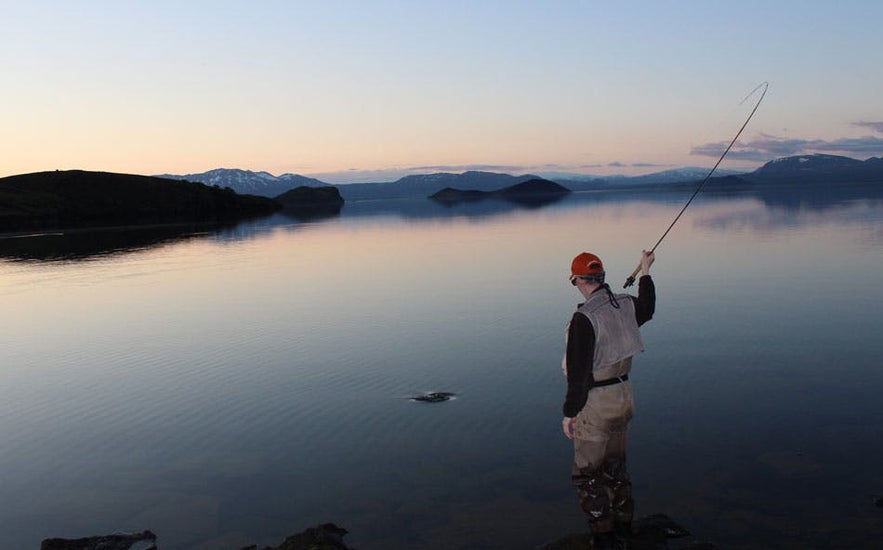
The enterprise of fishing in Iceland, however, goes much deeper than the modern joys of doing it recreationally. No practice has been more vital to the survival of the nation’s people in its thousand years of history. Without the bounties of the ocean, it would be unlikely that the land would ever have been properly inhabited.
Even today, it is the country’s largest export and one of the biggest sectors of its economy. Iceland has fought wars over its fish, refused to join the European Union over access to them, and also used them to form a unique cuisine that is increasingly drawing foodies from around the world.
Fishing in Iceland is thus a historical, commercial and cultural enterprise, as much as it is a recreational one. This article will explore the importance of the industry to the nation, as well as guide you regarding how to best enjoy it on your travels here.
History of Fishing in Iceland
Iceland was built on fish and wool. It survived in inhospitable conditions for centuries on very little else, without any significant infrastructure, and with hardly any outside contact. It was a mean and cruel life, but it kept the population alive until the nation could start to flourish with industrialization in the 20th century.
The bounties of the sea, however, could support large families and even bring them income due to the excess of marine life in the fertile waters around Iceland. What was fished up provided a fresh meal, was easy to conserve by salting or drying, and the by-products were exceedingly useful; fish-oil provided essential light for the dark winter months, and fish-leather was great for waterproofing clothing and writing on.
The abundance of food and resources hidden just below the ocean’s surface was an important facet of Norse heritage and beliefs; their God of the Seas, Njörðr, was renowned as one of the wealthiest deities. In spite of the dangers of taking to the seas of the North Atlantic, he was much more benevolent than his equivalents of Poseidon and Neptune in early Greek and Roman beliefs.
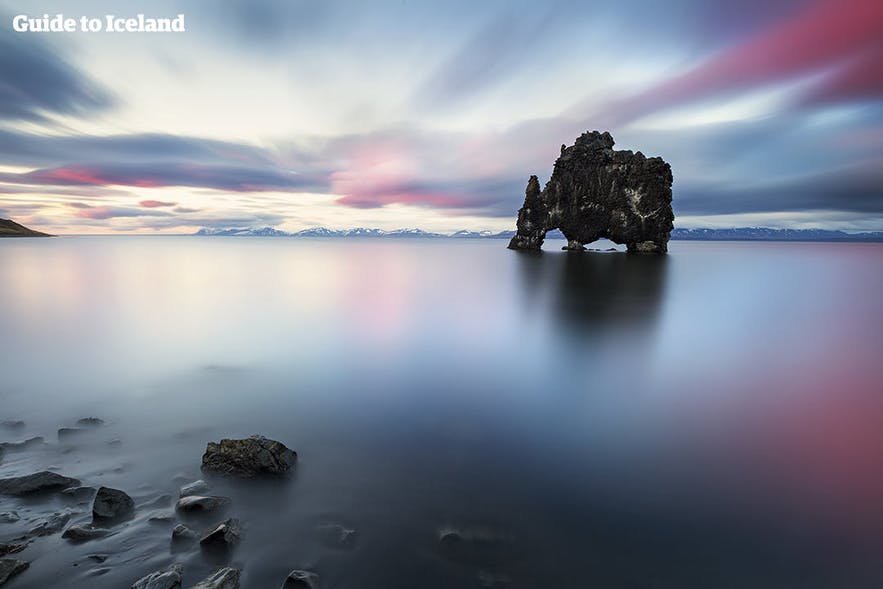
Little else is known about him, but all records point to the fact that he was widely revered by the seafaring Vikings.
Because fish was so vital to the survival of the early settlers, and because of the barren, unforgiving interior of the country, the vast majority of villages and towns formed in Iceland were - and still are - coastal. Before the population began a large-scale migration to Reykjavík in the 20th Century, there were many settlements of significance spread across every region.
Many have since been deserted, in spite of once being hubs of commercial activity. Búðir, for example, was once the fishing epicenter of the Snæfellsnes Peninsula, but changes in technology and development mean that all that is left now is a hamlet with a historic church and romantic hotel. Selatangar, on the Reykjanes Peninsula, used to draw hundreds of men for the fishing season, yet all that is left now are haunting (and allegedly haunted) ruins.
- See also: The Ruins of Selatangar
In spite of the amount of life it brought to the nation, fishing was historically a very dangerous affair. Boats were poorly constructed, the coastline rocky and ever-changing, and the weather volatile. Fishermen were thus highly respected pillars of society and often had to meet a threshold of physical strength to be allowed on the water.
On Snæfellsnes, this was measured by the ‘Lifting Stones’ on Djúpalónssandur beach, which can still be found; visitors can see how they would have fared in time gone by. Their names reflected the titles of those who could lift them, and are as follows:
- Lightweight, or Amlóði, which weighs 23 kilograms
- Half as Good, or Hálfdrættingur, which weighs 54 kilograms
- Half Strong, or Hálfsterkur, which weighs 100 kilograms
- Full Strength, or Fullsterkur, which weighs 154 kilograms
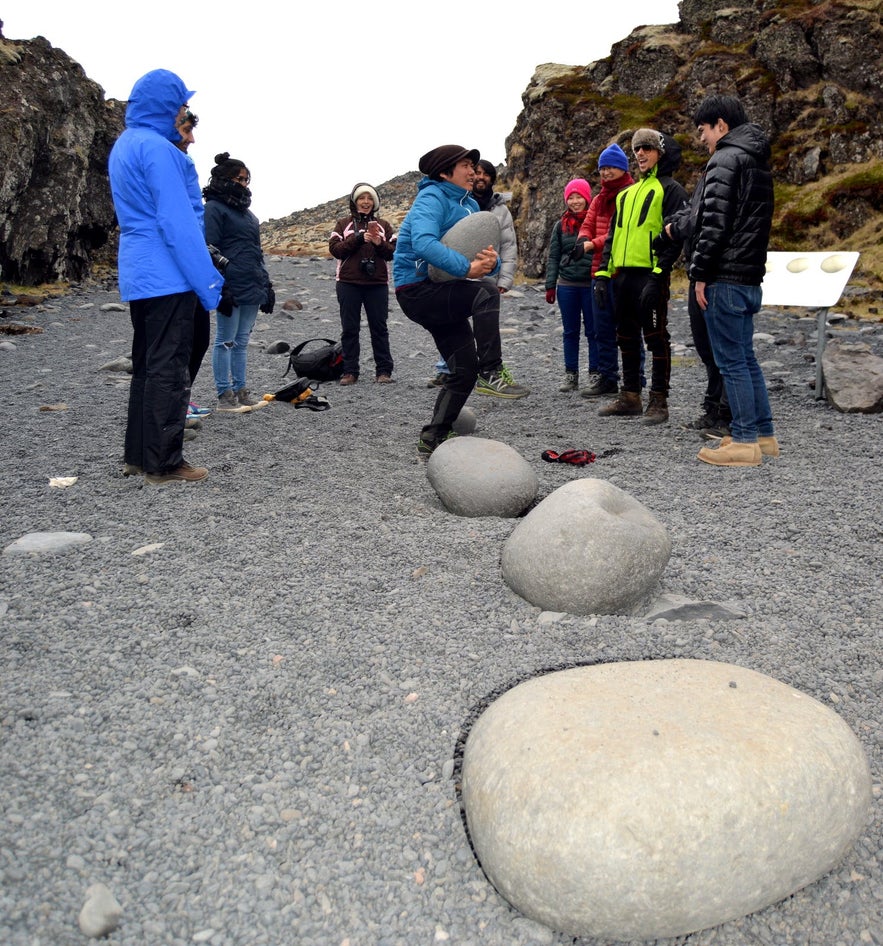
While these stones give you a little insight into the lives of historic fishermen, there are a wealth of museums all around Iceland where you can learn far more. Within Reykjavík, there is a Maritime Museum, which covers the fishing industry and explorations of the settlers; in Ósvör, in the Westfjords, you can find one with a curator always dressed in traditional fishing attire; and in Eskifjörður, in the East Fjords, there is another, by the historic Randulff’s Sea House.
The most comprehensive, however, is the only museum in Iceland to win an international award: The Herring Era Museum in the northern town of Siglufjörður. It has five excellent exhibitions, including a boathouse with eleven historical fishing vessels.
Commercial Fishing in Iceland
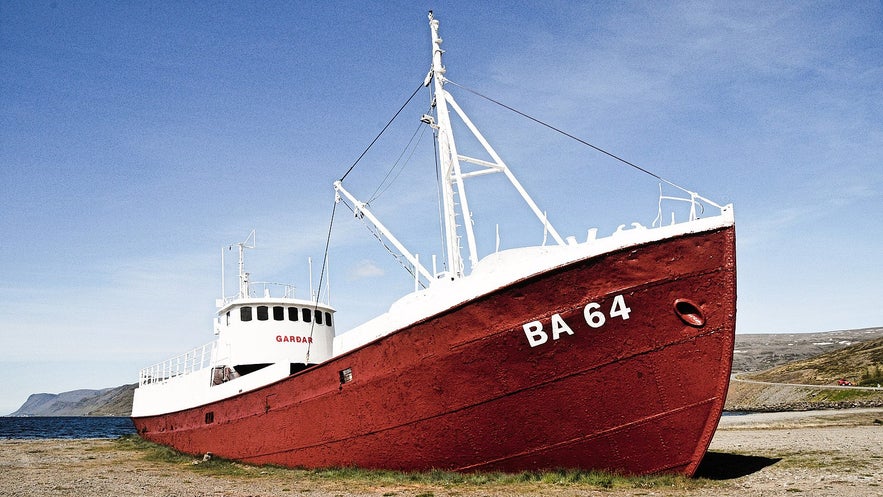 Photo from Wikimedia, Creative Commons, by Charlton. No edits made.
Photo from Wikimedia, Creative Commons, by Charlton. No edits made.
Commercial fishing is one of the biggest industries in Iceland, exceeded only now by the service sector due to the nation’s explosion of tourism. The centuries-old agricultural sector and new booming enterprises such as manufacturing and software production still trail behind it.
Though only 5% of the workforce is directly employed in fisheries, an extra 15% relies on them to remain relevant. 40% of all Icelandic exports are fish, and the economy is still very resource-reliant.
It is largely because of their reliance on this industry that Iceland has refused to join the European Union, and why public opinion has held against it as an institution. Iceland is part of the EEA, allowing for free trade and movement, but the people have been very resistant to the idea of handing over their fishing policies and quotas over to Brussels.
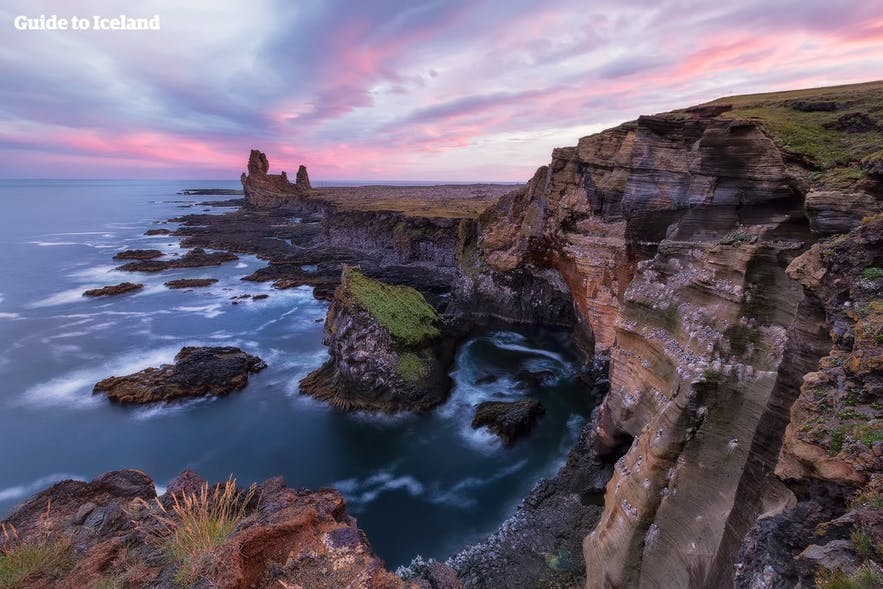
As Icelandic commercial fishing is sustainable (though has, of course, encountered serious environmental issues along the way), they have never respected the rights of other governments to regulate this for them. They have very much played by their own rules, the boldness of which inspired three ‘wars’ with the United Kingdom.
While they had no casualties other than a few broken bones, the Cod Wars were a significant strain on North European relations from the 1950s to the 1970s. Icelanders started the conflict by extending their exclusive fishing grounds from three nautical miles to four, then twelve, then fifty, and finally to two hundred in 1976. Since 1982 the United Nations standard has been 200 nautical mile exclusive economic zone.
Though details of the final legislation after each extension were not quite so clear-cut, the basic results of each move by Iceland ended up with international support, and them getting their own way.

The results were knocks to the British economy and reputation. After all, the Cod Wars were the first and only times when one NATO country sent a military force to threaten another; yet even the terrifying might of the warships of the British Navy could not daunt the stubborn Icelandic fishermen in their rickety boats.
Types of Fish in Iceland
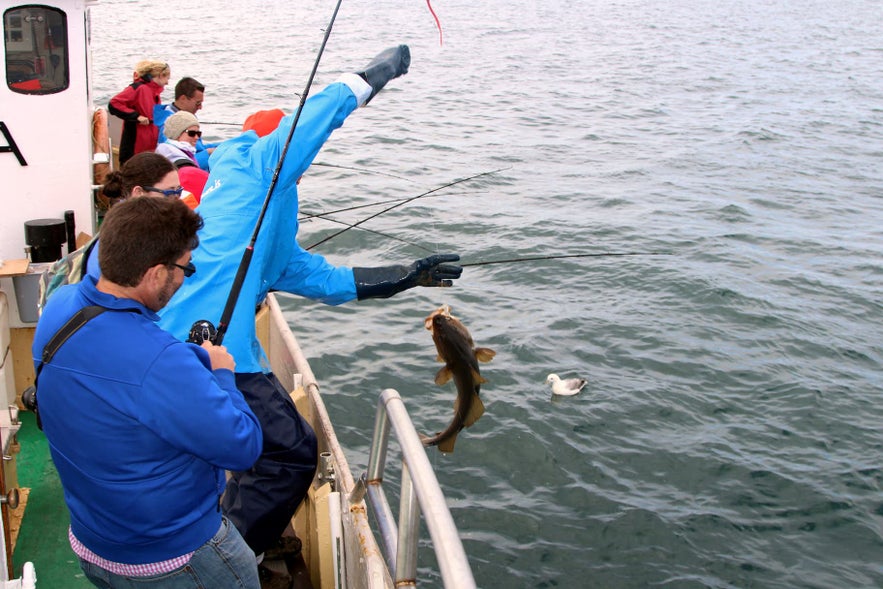 Photo from Small Group Sea Fishing Gourmet Tour | From Reykjavík
Photo from Small Group Sea Fishing Gourmet Tour | From Reykjavík
With fertile oceans and freshwater leaking from seemingly every pore of lava rock, it is no wonder Iceland has so many fish. Its number of different species - particularly in the lakes and rivers - are surprisingly few, but in terms of individuals, there is no shortage. Its oceans are breeding grounds for many species, and often the only places where endangered specimens such as Halibut can be found in high numbers.
Saltwater Fish in Iceland
It was largely the ocean’s fisheries that kept Icelanders alive for a millennium. The wealth of nutrition carried to the coasts by the Gulf Stream has allowed for an abundance of food to bloom, and such food has supported Icelanders as much as it has the nation’s many whales, dolphins, seals and seabirds.
Below are the species you are most likely to catch on a sea-angling tour.
Catfish
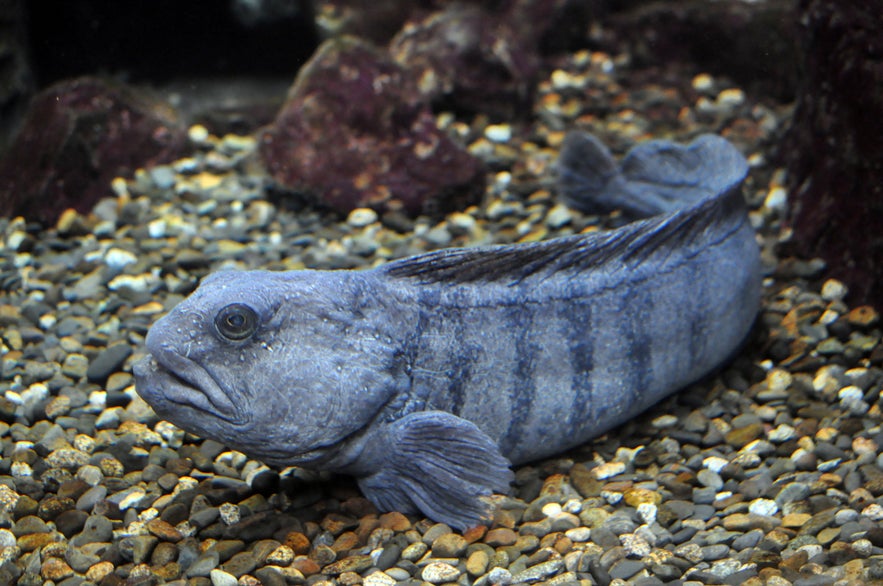
One of the most commonly caught fish in Iceland is the Atlantic Catfish (Steinbítur in Icelandic). It is popular as the Icelandic delicacy of dried fish. If you want to try this, it is recommended with large scoops of butter.
Catfish can be quite large, often over a metre long, and survive in the near Arctic waters with the anti-freeze that pumps through their blood. The heaviest recorded was 18 kg (40 lb).
Atlantic Cod

Cod (Þorskur in Icelandic) is the favourite fish of New England and the UK, and, remembering that three wars were fought over it, it is similarly loved in Iceland. In spite of it being vulnerable throughout much of the Atlantic, it is still rather abundant here, and catching or purchasing it has less ethical concerns than throughout much of the rest of the world.
For those seeking a large catch, fishing for cod can be very rewarding. Often a metre or more, the largest recorded weighed a whopping 96 kgs (211 lbs).
Haddock
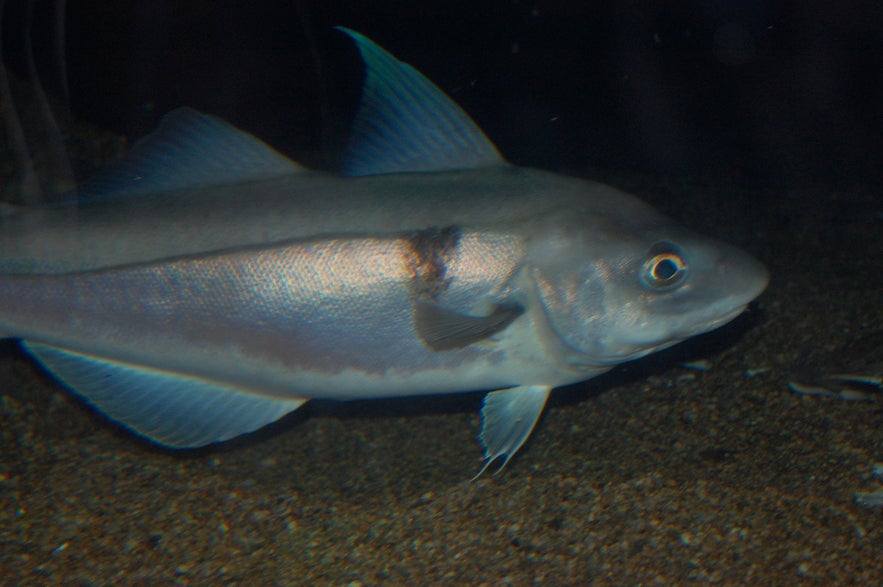
Haddock (Ýsa in Icelandic) are another species that are vulnerable globally, but have thriving breeding grounds in Iceland and are thus little threatened here. They have formed a large part of the Icelandic diet since settlement, and are used in some classic dishes. The most notable of these is smoked haddock from the Arctic island of Grímsey.
In spite of being delicious and easy to catch, haddock are small compared to other species you might hook up on a sea angling tour; they rarely exceed 60 centimetres.
Mackerel
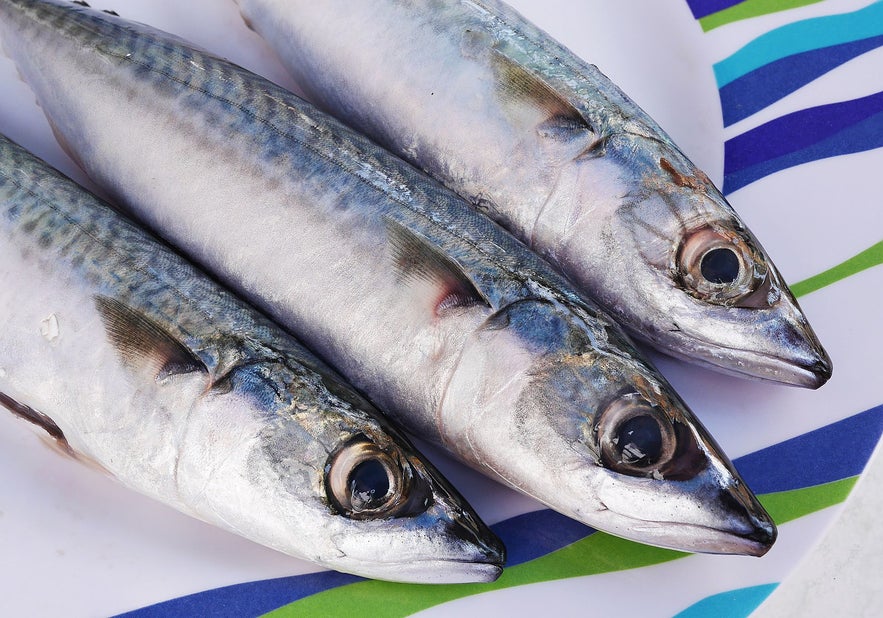
Mackerel (Makríll in Icelandic) are even smaller than haddock, often not reaching half their length. What they lack in size, however, they make up for in global abundance, without any major conservation concerns surrounding them. As such, mackerel fishing is a highly commercial enterprise.
Mackerel is increasing in popularity in Iceland due to its red meat and high levels of nutrition; it also has low levels of mercury, meaning it can regularly be eaten without worry.
Halibut
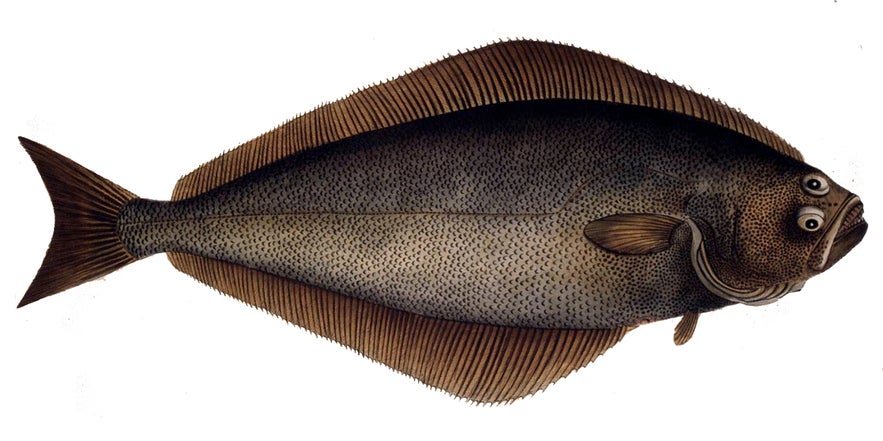
Atlantic Halibut (Lúða in Icelandic) are the only fish caught on sea-angling tours that are endangered, so catch-and-release is highly encouraged if you should hook one up; they have been heavily exploited for their size (up to 320 kgs, or 710 lb) and have a slow reproductive cycle. You can still buy and eat it ethically in Iceland, however, as they are raised here on fish-farms to protect their wild populations.
Pollock
 Photo from Wikimedia, Creative Commons, by George Berninger. No edits made.
Photo from Wikimedia, Creative Commons, by George Berninger. No edits made.
Pollock (Ufsi in Icelandic) is an abundant fish, up to one metre long, with the heaviest recorded weighing 21 kg (46 lb). Though often scorned at by foodies for its commonness (being the main ingredients of frozen junk-food like fish fingers), the Nordic countries have always held it in high regard for its distinctive yet mild flavour.
Freshwater Fish in Iceland
Only five species of fish live and breed in Iceland’s many rivers and lakes, two of which are not routinely eaten: the three-spine stickleback and the eel. The other three, however, are found in abundance, to the pleasure of fly-fishermen and foodies, as they are the main ingredients for many classic Icelandic dishes.
Brown Trout
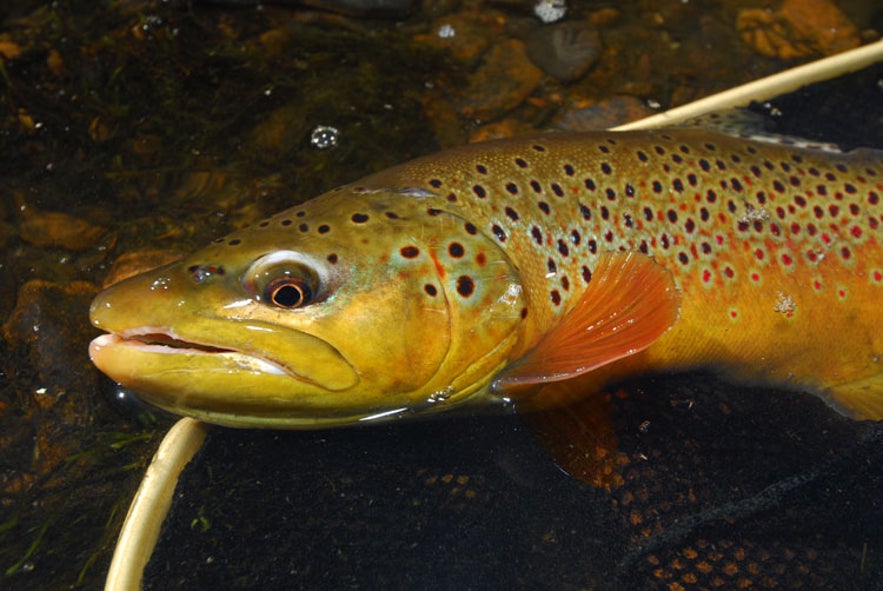 Photo from Wikimedia, Creative Commons, by Zach Matthews. No edits made.
Photo from Wikimedia, Creative Commons, by Zach Matthews. No edits made.
Any fisherman used to cooler climes will be well-used to catching trout (Urriði in Icelandic). While the species seems a little mundane, for this reason, they are rather special within Iceland’s largest natural lake, Þingvallavatn. Isolated from any other body of water for ten-thousand years, the trout population has evolved separately from its cousins globally, and are much larger as a result.
If you choose, therefore, to fish within Þingvallavatn, you may just hook up the largest trout you ever have, up to and exceeding 15 kilograms (33 lb). Such a catch makes for a great photo, but you must release it back into the water; at this location, their lives are protected by law.
To catch a trout you can eat, you should instead look for Sea Brown Trout as they travel upriver through September; the Varmá River is best for this. While they continue to move inland throughout October, the Sea Trout fishing season runs only from April to September 30th.
Atlantic Salmon
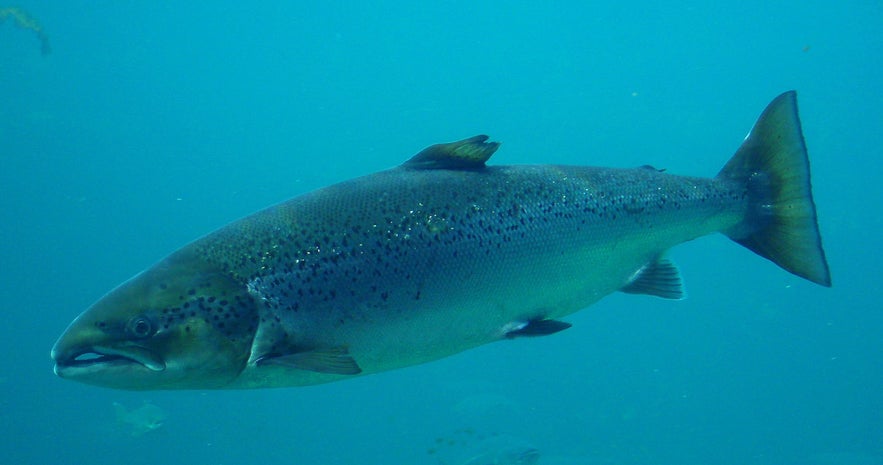
Although fishing for salmon (Lax in Icelandic) is more regulated than fishing for Iceland’s other species, it is still more than possible across the country from June 1st to September 30th. Some very large specimens travel through Iceland’s waters; one of the biggest was caught by none other than singer Eric Clapton, weighing in at 28 lbs.
Arctic Char
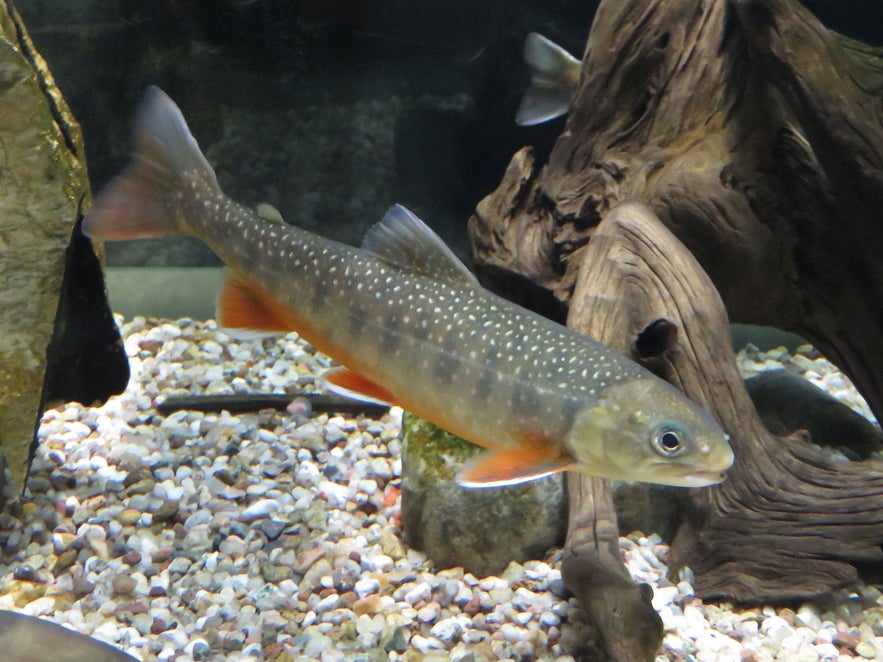 Photo from Wikimedia, Creative Commons, by Xepheid. No edits made.
Photo from Wikimedia, Creative Commons, by Xepheid. No edits made.
The most commonly caught freshwater fish in Iceland, and the one which is seen in most restaurants sold as a classic national dish, is the Arctic Char (Bleikja in Icelandic). Its abundance makes up for its small size; they are usually between 0.2 to 5 kgs (0.5 to 10 lb), but individuals double that are caught on occasion.
Arctic Char prefer slower moving water at an even lower temperature than trout, but can be found in many common areas, such as Þingvallavatn. They are the most widespread fish in Iceland, found in most freshwater bodies.
Recreational Fishing in Iceland
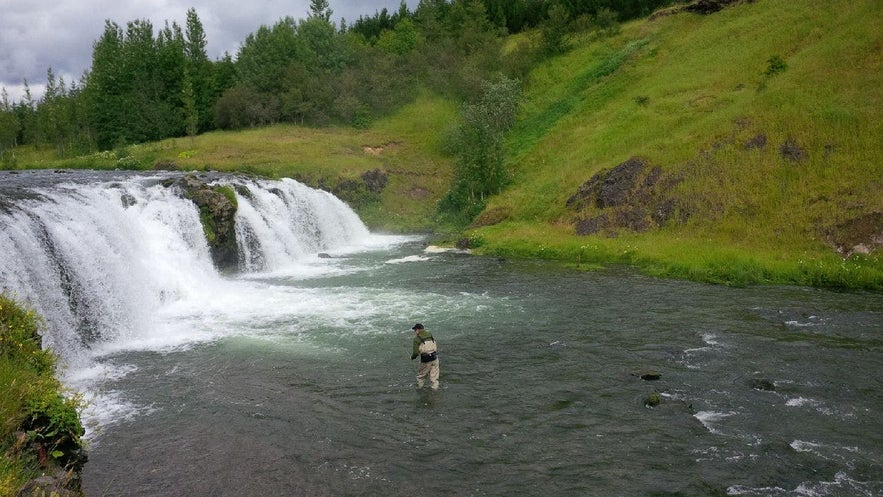
Despite being a liberal leftie vegetarian and unquestionable Hufflepuff, whose empathy extends even to the cold, dead face of the ugliest cod, I can see why fly-fishing and angling are such popular activities. To be able to immerse yourself in the world’s quietest, most serene places is one of the privileges of visiting Iceland; to be able to hook yourself up an ethical, fresh, free meal would only add to the experience.
Before flocking over here expecting to empty the rivers and oceans, however, there are some things that those with a passion for fishing should know before arrival.
Fishing Regulations in Iceland
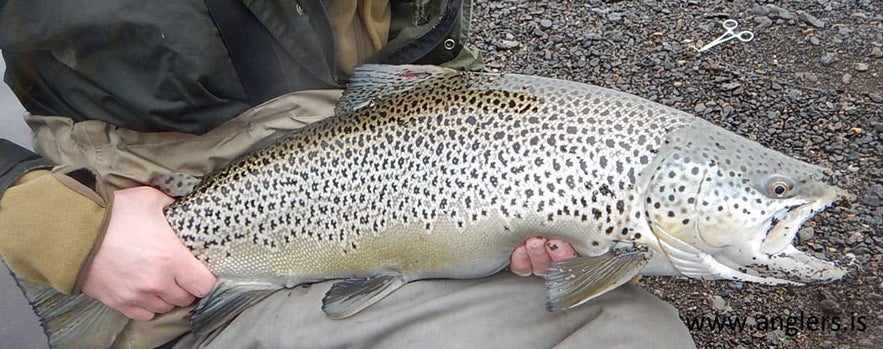
To protect stocks and the nature, fishing is heavily regulated in Iceland. Each river system has its own rules, and it is always best to check what they are before setting out. Using this website, you can easily find a river or lake that suits your needs.
The main general rules are as follows:
- Rod fishing is legal from 07.00 to sundown. Fishing at night is illegal, and you are not permitted to fish for over twelve hours.
- Net fishing for salmon is only legal on Tuesdays, Wednesdays, Thursdays and Fridays.
- Salmon can only be fished from June to September, and only in freshwater.
- You cannot net fish for salmon in the same river that someone is fly-fishing for them, and visa versa.
- You cannot move salmon from one river and leave it in another.
- You must clean and sterilise any fishing equipment before using it in Icelandic waters if it has been used overseas.
- Fishing in any body is only allowed with express permission from whoever owns the land. In many places, there are total bans.
The trends in Iceland are moving quickly away from net-fishing; within a few years, it is expected to be fully banned in almost all rivers and lakes. Catch and release is also heavily encouraged, and in many places mandatory.
Fishing Independently in Iceland
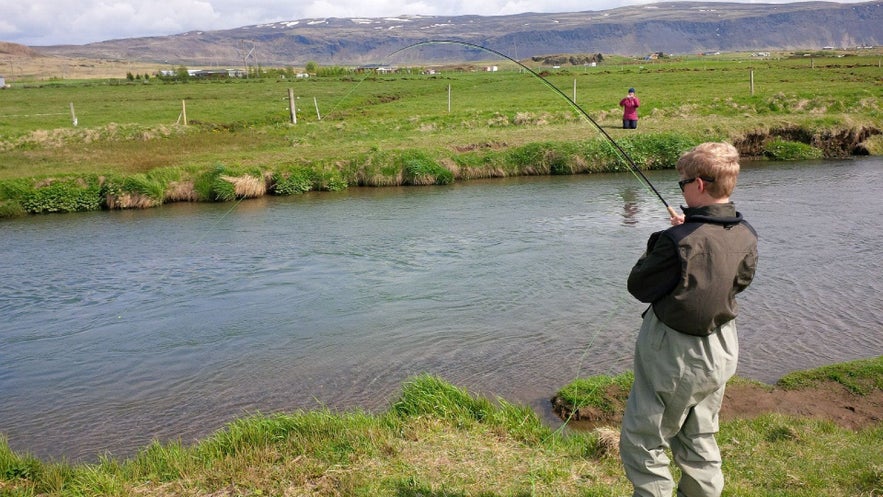
There are plenty of ways to enjoy the pleasure of fishing in Iceland, whether you seek to do so independently or with an experienced guide.
Some outfitters will rent you rods for multiple days, although you must always buy or bring your own fliers/spinners. You are, of course, welcome to bring your equipment from home; as mentioned above, however, it must be sterilised before being put in any Icelandic river or lake.
To fish in Icelandic rivers and lakes, you will need licences, which differ in cost and availability depending on where you look. You can, however, get a single licence for just 6,900 ISK which will allow you access to over thirty lakes in the country; as a bonus, any child under fourteen is allowed to fish with a cardholder for free.
You can purchase these online, or at an N1 or OLIS gas station, both of which are found all over the island.
Lake Fishing in Iceland
The most popular lake for fishing in the country, as you may have guessed by now, is Lake Þingvallavatn. Its wealth of life, closeness to Reykjavík and beautiful surroundings make it a perfect place to unwind, and either catch a char for dinner or a record trout you can have a photograph with.
It is far from the only option, however. Laugarvatn, known best for the geothermal heat that rises from its bed, is also home to many trout and char. It is on the Golden Circle route, like Þingvallavatn. Lake Elliðavatn is within the Greater Reykjavík area, and here you have a better chance of catching salmon.
In north Iceland, you can fly-fish in Lake Mývatn, a diverse region of birdlife, craters, geothermal areas, spectacular lava formations, and, of course, freshwater systems. In the east, the most popular spot is Lake Lögurinn; because of the murky glacier water, lures tend to be ineffective, so net fishing is the best option here.
Keep an eye out on the lake here while waiting for your catch; it said to contain a mythical wyrm creature, records of which date back centuries.
- See also: Lakes in Iceland
River Fishing in Iceland
Rivers snake all across Iceland, most originating at the glaciers and containing many spectacular waterfalls. It is not possible to fish in all of them, and even where it is, there are different regulations on whether or not you can net-fish, how many rods may be used in the area at once, and what times you are allowed to be angling.
To catch Atlantic Salmon, however, you generally have to fish in the rivers; they can occasionally be hooked up in a lake, but this is uncommon. The four best rivers to fly-fish for salmon in Iceland are:
- The Fossá River, a two-rod river in south Iceland (catch-and-release only)
- The Laugardalsá River, a three-rod river in west Iceland
- The Miðfjarðará River, a six-to-ten-rod river in north Iceland (catch-and-release only)
- The West Rangá River, a fourteen-rod river in south Iceland
If you wish to net-fish for salmon, the Þjórsá river is best.
If you prefer fly-fishing but are not fussed about catching salmon, the Varmá, Brúará and Holaá Rivers are both very easy to access from Reykjavík, and excellent locations to hook up trout and char.
- See also: Rivers in Iceland
Ice Fishing in Iceland
In spite of its name, Iceland is not cold enough to support reliable ice fishing, even in the depths of winter. The most frozen lakes are in the Highlands, which are almost entirely inaccessible in this season, and those in the North that used to freeze over for months of the year are becoming less dependable as the climate of the country is rapidly warming.
Sea Angling in Iceland
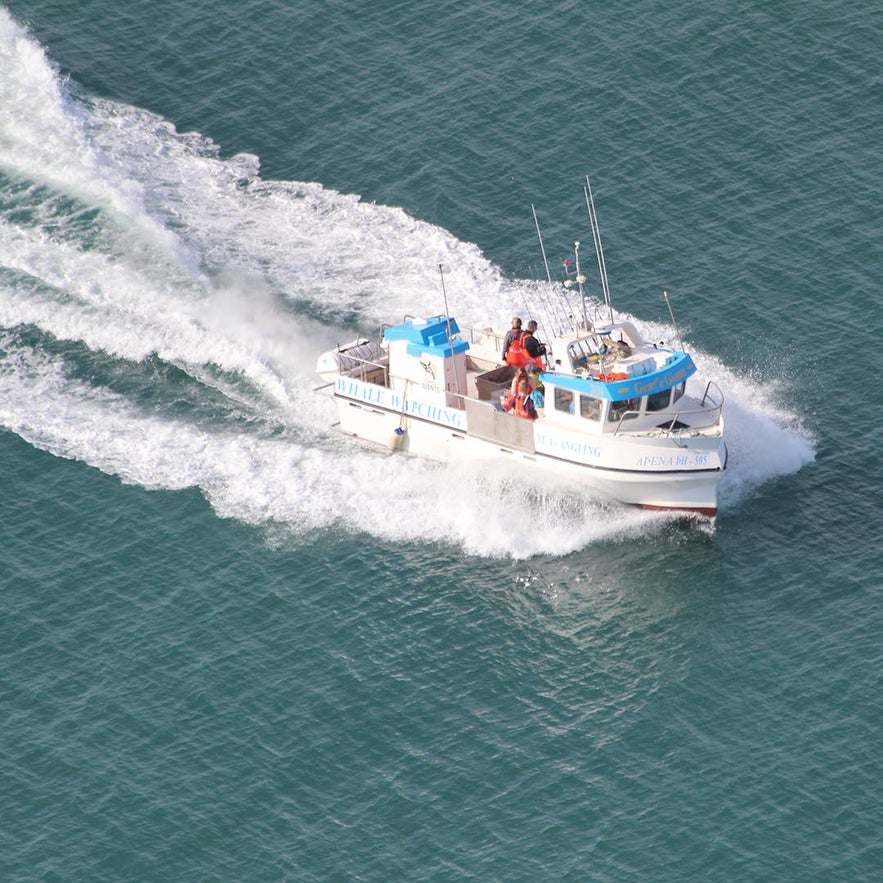
Sea angling is difficult to do independently unless you wish to from the shore. The easiest, most stress-free place to do this is at Reykjavík’s Old Harbour. Here, you can rent a rod for approximately $30 an hour, and start angling from the end of the pier. This is a great way to break up a day of city sightseeing and to hook up a meal without leaving the capital.
Boat tours which will take you to much more bountiful fishing spots, however, run all around the country and are discussed in more detail below.
Fishing Tours in Iceland
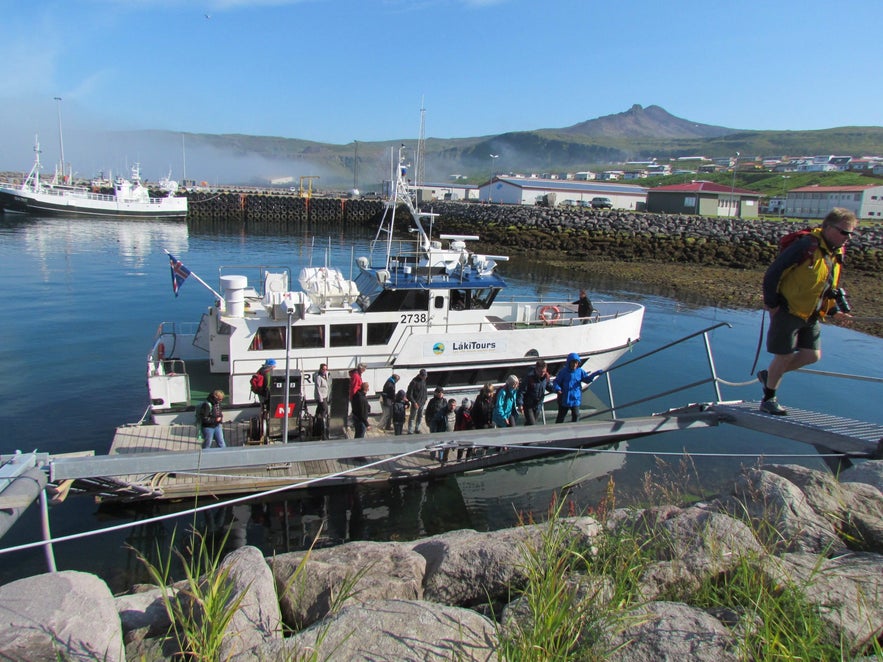
Fishing holidays will often allow you to head to the lesser-known rivers but tend to be incredibly pricey. Day tours, or shorter multi-day tours, are usually a lot cheaper, easier, and more readily available.
This day tour, for example, will allow you to fish in Lake Þingvallavatn and the Brúará River, and is tailored for the experienced and beginners alike; you are likely to catch brown trout and arctic char.
You can also combine a fishing tour with sightseeing around the popular Golden Circle route, which includes visits to Gullfoss Waterfall, the Geysir Geothermal Area, and Þingvellir National Park. You will fish in up to three different spots, including the Lake Laugarvatn, the nearby Holaá River, and the Brúará river, time and conditions depending.
Both of these tours include pick-up from Reykjavík, and all equipment is provided for you.
If you are more interested in sea angling than river or lake fishing, there are options all over the country. The best from Reykjavík is undoubtedly this tour, which combines sea angling with whale watching in Faxaflói Bay. As well as catching yourself a fresh meal, you are likely to see incredible animals, such as minke and humpback whales, white-beaked dolphins, puffins, and even orcas and harbour porpoises.
You can barbecue your catch after the angling component of the tour, or else take it to the restaurant MAR, where the experienced chefs will cook it up for you. Of course, you can also take it home and prepare it yourself.
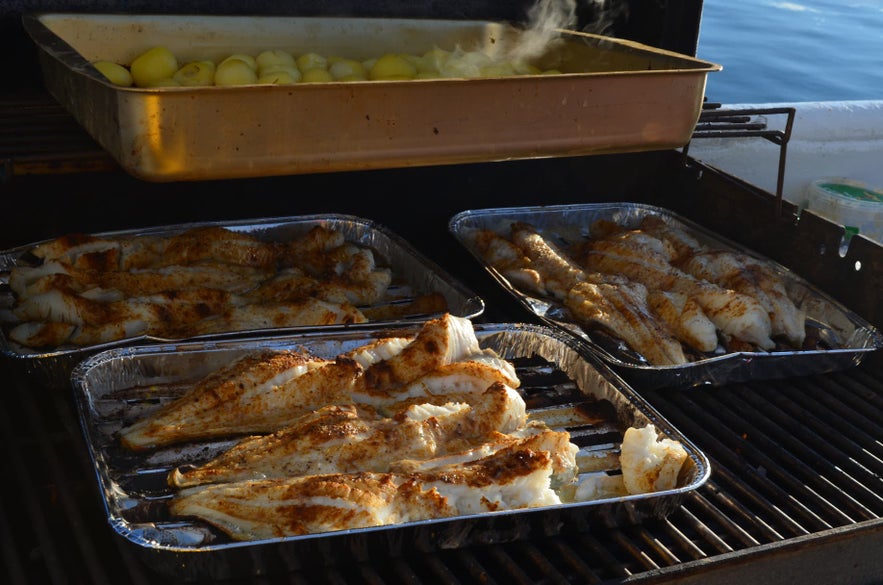 Photo by Unforgettable 6 Hour Combination Whale Watching & Sea Fishing Tour with BBQ Meal
Photo by Unforgettable 6 Hour Combination Whale Watching & Sea Fishing Tour with BBQ Meal
If you are spending more time in north Iceland, then this sea angling tour from Húsavík may have more appeal. You will be taken out into Skjálfandi Bay, which has the highest concentration of different whale and dolphin species in Iceland as well as many puffins, to try and hook up cod or haddock. The captain can fillet the fish on your request, and, again, you can either take it home or to a local restaurant for a delicious meal.
For a more immersive experience, you could even look into this three-day tour from Reykjavík, which focuses on sea angling but will also take you whale-watching, bird-watching, sightseeing, hiking and to the Herring Era Museum. You will be driven to the north of Iceland via some spectacular sites, then take a ferry over to Hrísey Island, where excellent fishing awaits. On the third day, you will return to the capital via the Golden Circle route.
To conclude, fishing has always been an intrinsic part of the Icelandic character; while it is no longer the island’s primary means of survival, it still has a huge amount of historical, commercial, cultural and recreational value.
To have the opportunity to stand at the edge of a serene lake, or to sit on a boat undisturbed in a northern fjord, angling for your dinner is something no-one who loves fishing should miss out on.
บทความอื่นที่น่าสนใจ
แผนที่ประเทศไอซ์แลนด์
มาดูแผนที่ของประเทศไอซ์แลนด์ที่คุณจำเป็นต้องใช้กัน แผนที่นี้ประกอบด้วยสถานที่ท่องเที่ยวในไอซ์แลนด์ 20 แห่ง ซึ่งเราได้จัดทำแผนที่ท่องเที่ยวสถานที่สำคัญของไอซ์แลนด์บน Google Maps ให้ด้วย เพื่อช่วยให้ค...อ่านเพิ่ม
ขับรถในไอซ์แลนด์: คู่มือสำหรับโร้ดทริป
เรียนรู้ทุกสิ่งที่คุณอยากรู้เกี่ยวกับการขับรถในประเทศไอซ์แลนด์ ค้นหาว่าทำไมการขับรถในประเทศไอซ์แลนด์จึงเป็นเรื่องง่ายในฤดูร้อนและยากกว่าในฤดูหนาว เรียนรู้วิธีการและข้อกำหนดในการเช่ารถสำหรับการเดินทา...อ่านเพิ่ม
พักที่ไหนดีในไอซ์แลนด์
ค้นหาที่พักที่ดีที่สุดในไอซ์แลนด์ได้จากคู่มือท่องเที่ยวฉบับละเอียดนี้ คุณกำลังมองหาโรงแรมและที่พักในไอซ์แลนด์อยู่ใช่ไหม? หรือกำลังสงสัยว่าจะเลือกพักที่ไหนในไอซ์แลนด์เพื่อชมแสงเหนือหรือพระอาทิตย์เที่...อ่านเพิ่ม

ดาวน์โหลดตลาดการท่องเที่ยวที่ใหญ่ที่สุดของไอซ์แลนด์ลงในโทรศัพท์ของคุณเพื่อจัดการการเดินทางทั้งหมดของคุณได้ในที่เดียว
สแกนรหัส QR นี้ด้วยกล้องในโทรศัพท์ของคุณแล้วกดลิงก์ที่ปรากฏขึ้นเพื่อเพิ่มตลาดการท่องเที่ยวที่ใหญ่ที่สุดของไอซ์แลนด์ไว้ในกระเป๋าของคุณ ป้อนหมายเลขโทรศัพท์หรือที่อยู่อีเมลของคุณเพื่อรับ SMS หรืออีเมลพร้อมลิงก์ดาวน์โหลด
